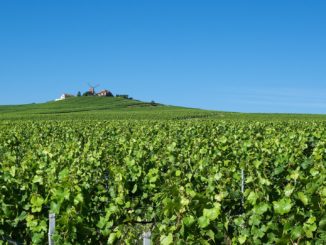
“Ms McGuinness’s press release should have congratulated farmers on increasing their share of consumer spending over this period, rather than arguing that their share has been decreasing.”
So says Professor Alan Matthews, in a new post on his CAPreform blog. The context for this claim was the use by MEP Mairead McGuinness of EU Commission stats to suggest that farmer/producer power, as expressed through share of consumer price, is declining in the face of increasing power from further up the food chain, namely retailers.
According to the Irish Times, Mairead Mcguinness said “The 2011 figures compiled by Eurostat show that farmers receive 21 per cent, the food industry gets 28 per cent and the remainder, 51 per cent, goes to food retail and food services. Receiving slightly more than one-fifth of the price consumers pay for food is an insufficient share for those who provide the lion’s share of the input. Farmers invest the greatest effort and time of all stakeholders in the food chain and also carry the greatest risks, including weather impacts.”
So what is Alan Matthews saying? Very specifically, he is saying that the Commission’s use of Eurostat figures is wrong. So while there are examples of concentrations of power, cartel-like behaviour and the potential that some players can “extract monopoly rents at the expense of producers”, the stats provided to Mcguinness are incomplete and misleading.
Put straightforwardly, he suggests that are more accurate stats, and they show, perhaps suprisingly, that the producer-end of the food chain is holding its own quite well.
Matthews’ position may seem counter-intuitive. Conventional wisdom, and, to be fair, many specialised academic studies do back up the following broad picture: The producer is loosing power, while those involved in processing, distribution and consumption are gaining power. Supermarkets and large agri-business are foisting a cost-price squeeze and other displays of power onto producers. The latter get an ever smaller share of the profits from food. Indeed, as production becomes more industrialised, and as food itself becomes more processed, value-adding happens further and further up the chain. This happens when Transnational Corporations manufacturing ever more agri-industrial inputs (e.g. pesticides) or retailers developing their own brand ready meals (called vertical integration – control from field to fork).
There is ample evidence for this process occurring:
- Becvarova (2002) puts it thusly: “The position of agriculture within the agri-food chain has changed and the influence of farmers has decreased” (opens cache; opens .pdf).
- Vorley (2006) (opens cache, opens .doc) says “European governments have been politically unable to modernise competition policy to accommodate the clear shift in the European competitive environment, from producer market power to retailer buyer power.”
- Morgan, Marsden and Murdoch (2008) say “it is difficult to see anything other than a disempowerment of the producers”
All provide evidence for this trend in the links provided.
However Matthews refutes the Commission’s interpretation and stats on a number of fronts. The Commission has caused confusion, he says, by saying:
“Value-added of a sector is a good proxy for its economic importance and its evolution provides insights on the sector’s economic health…. Comparing evolution of the repartition of value-added along the food supply chain can then be informative on the evolution of bargaining power along the chain”
That’s an error, according to Matthews, because:
- The figures themselves are highly uncertain (food and non-food items included, for example)
- It is not clear from the Commission how food imports are treated.
- Value-adding in agriculture is influenced by the different treatment of agricultural subsidies following the Fischler CAP reform in 2005. “Statistical reclassification alone led to a sharp fall in the figure for gross value added in agriculture at basic prices from 2005… this fall in agriculture’s value added was due to a deliberate policy shift, and had nothing to do with changes in bargaining power along the food chain.”
- Later figures have been calculated on a different basis to the earlier ones. “In particular, it appears that value added in the food service sector has been added to the value added in the food retail sector”.
He also points out that off or post farm value adding, what he refers to as “the marketing bill”…”says nothing about the trend in bargaining power in the food chain.”
More accurate stats, he suggests, come from the European Food Price Monitoring Tool, and these show growth in farm prices in May 2014 “well ahead of the growth in retail prices”. He also adds that there are time and product specificities, and that as farm level “productivity increases more rapidly, the producer’s share of supply chain value added can fall without adversely affecting his or her return on investment and labour.” (bold added)
So what do you think? Is Matthews correct about these Commission/Eurostat figures and about producer power? What do those in the agri-lobby think?
Alan Matthew’s ever-informative blog is here




